Our Blog - Flavigny-sur-Ozerain, France
Another of the Plus Beaux Villages, Flavigny-sur-Ozerain is probably most known as being the only place that manufactures the Anis de Flavigny sweets. More on the sweets later. The hilltop village dates back to 52 BC when the Gallic leader Vercingétorix led a rebellion against Caesar. Vercingetorix fell back on Mount Auxois and Caesar established lines of defense all around the oppidum and defeated the Gallic armies. He set up one of his military camps on the Flavigny hill. As the Roman armies departed the area, land was offered to the Roman veteran Flavinius and the town of Flavianiacum was established, later being renamed to Flavigny-sur-Ozerain. The town prospered during the Middle Ages, catering to large numbers of pilgrims, both those who came to visit the relics of Saint Reine and those on their way to Santiago de Compostela. By the 10th century, the abbey had grown into a town, with a parish church dedicated to St. Genest in addition to the abbey church. During the 12th and 13th centuries, extensive fortifications were built around the town. Large sections of these walls still surround the village today, although the fortifications were not very effective since the town was taken and occupied by the English during the Hundred Years' War.
The population has dwindled ... from 1337 people in 1800 down to 302 people in 2017. The town was, well, pretty much dead. We couldn't find anything open ... no cafe, no bar, no restaurant, no stores. We walked around and saw a few sights.
One of the gates to the town, the 15th-century Porte du Bourg, contains a statue of the Virgin. Porte du Bourg, 15th century

I don't have any information on this fountain other than the dates written on it: 1864-1868.


At the corner of this building was an interesting guy carved into the stone.


The church Saint-Genest, built in the 13th century, was rebuilt in the 15th and 16th centuries. The exterior looks rather plain, and the interior is mostly Gothic style with choir stalls dating from the 16th century. It is a little hard to see, but on the facade are statues from the 15th century of Saint Louis and an unidentifiable apostle.
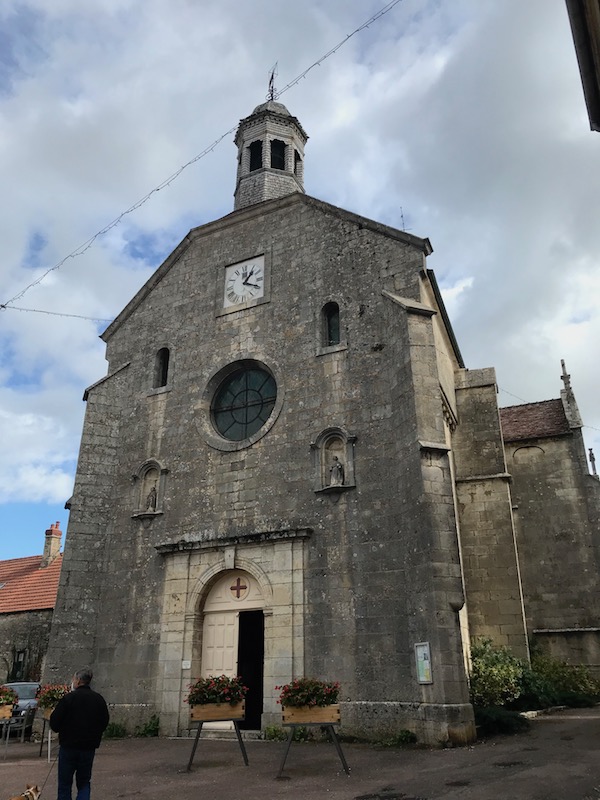


Not far from church, the Maison au Donataire Vierge has a 15th century façade and takes its name from the presence of a niche on the front with a polychrome statue of the virgin and child. If you look closely at the feet of the Virgin, there is a small statue which would represent the person who had this statue created.
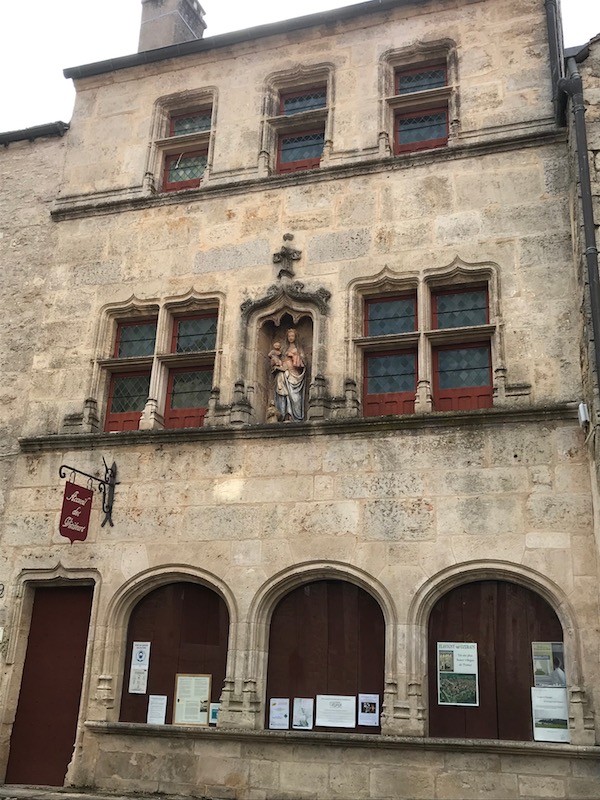

In 2000, there was a romantic comedy with Juliette Binoche, Judi Dench, Carrie-Anne Moss, and Johnny Depp called "Chocolat". It tells the story of a woman and her daughter who, in 1959, travel to a very traditional French village at the start of Lent and opens a chocolate shop. Most of the movie was filmed in this town, with this house being the storefront used for her chocolate shop.

The Benedictine Abbey of St. Peter was founded here in 717, was rebuilt in the 17th century. It was a very important religious place during the Carolingian period (the 700-800's) and the crypt from that time still remains, and can be visited. It housed the relics of Saint Regina, who was beheaded for her faith in the town of Alise (now called Alise-Saint-Reine). The abbey was dissolved during the French Revolution.
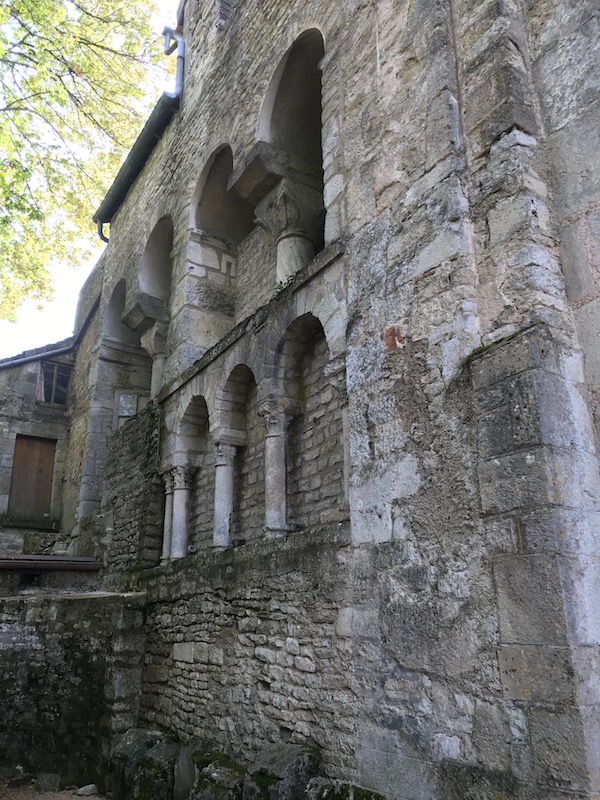


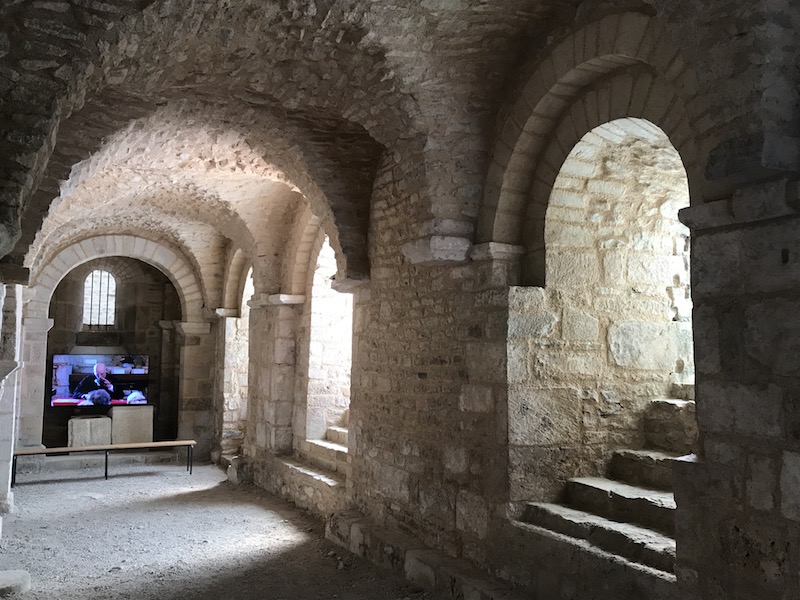


This painting shows the moving of the relics of Saint-Reine from the town of Alise to this abbey. The painting was done in the 17th century, and the people are dressed as they would have been at that time, even though the scene depicted would have been in the 9th century.

Now to the candy. We were about to head back to our car since we had found nothing open in town, when we went around the corner from the Abbey and ran across something open! We initially just thought it was a store or cafe, but it ended up being a factory that produces the Anis de Flavigny candies. I've seen these candies before ... they are sold everywhere and are very recognizable in an oval-shaped tin box. We were able to watch a little video that talked about the history and production, and then there was a guided tour that was just about to start (I was the only one on it ... Tom stayed outside with Lucy). It was a quick tour with no pictures, and I got to go see the actual factory production.
As part of the information, I found out that this is *the* one and only factory, producing hundreds of thousands of these little balls of sugar every year. Now, you may ask yourself, "why here? why in this dead little village?". If so, you aren't the only one :-) Well, remember the Benedictine Abbey that I just mentioned? It was these Benedictine monks who started creating these candies. Green anise seeds are good for digestion, but that that great to eat by themselves. So they started coating the seeds in sugar to make a candy. They take green anise seeds and they go into a copper vat. That vat spins for 15 days, while successive thin layers of a syrup of sugar and flavoring is added. The constant turning creates the round shape and smooth exterior. In this first picture, you can see some of the tins, but then below that you can see a progression from the seeds (far left) to the finished product (far right).
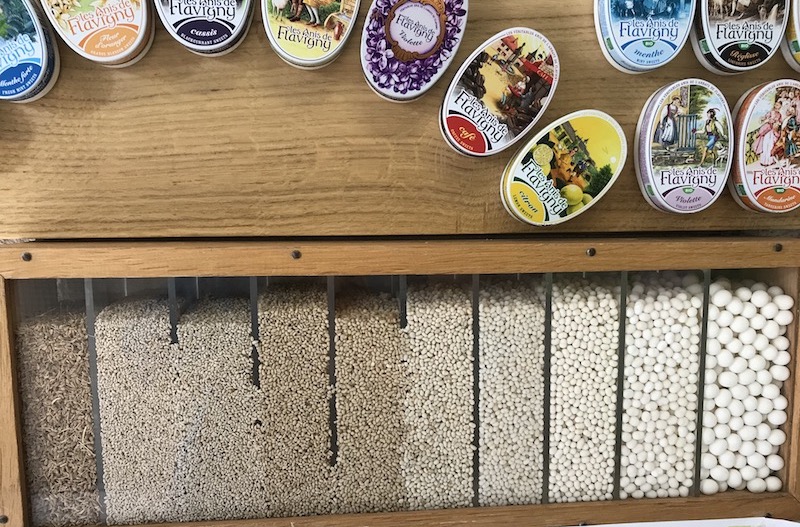
They have a little museum there containing some of the old machines and packages. For example, the first counting machine was introduced in 1923. Previously, a person would manually count the exact number of candies to put in a box. With this machine, the candies were placed in a large vat and they would fall onto a board holes for each candy that would go into a box. The worker would manually open the box, then move the board so that the candies that were in the holes would then go into the box. She would then close the box and move the board back so that the holes would get filled again, ready for the next box. Now, the newest machine opens, fills, forms, shapes, weighs, and cellophane-wraps the boxes, then prints the batch number and "best before" date on it.

I mentioned the copper vats that the candies spin in for 15 days, this first pan is one of the ones used up until 1855. The second one shows the type that replaced that first pan in 1855 and are still used today.


One of the Agatha Christie books, Sleeping Murder: Miss Marple's Last Case (in this case, it is in German). One of the covers of the book shows a round box of the candies with a Violet flavor.
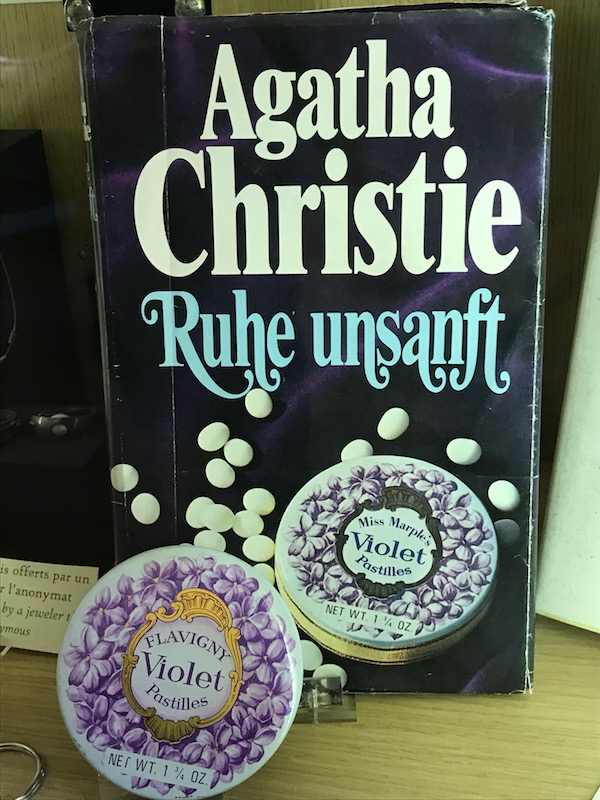
A couple points of trivia: Les Anis de Flavigny received an award in 1988 for being "one of the oldest sweets in France". King Louis XIV was said to always have a box of them in his pocket. They were the first candies to be offered in train station and metro vending machines in the 1930s.